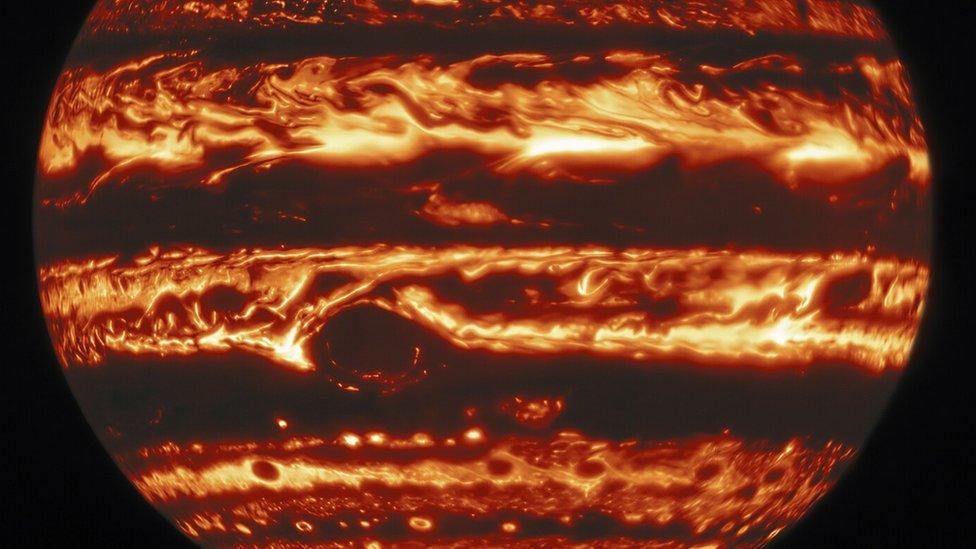Jupiter: New images show the planet in a new light
- Published
- comments

Take a look at Jupiter in a different light!
Nope, this isn't a picture of a fiery new planet, it's Jupiter!
These new pictures were taken by the Hubble Space Telescope and Gemini North telescope in Hawaii.
Researchers used something called multiwavelength astronomy to capture the planet in three different kinds of light - infrared, visible and ultraviolet.
By looking at the planet in this way, researchers have been able to learn new information about Jupiter's atmosphere, that they might not normally be able to see.
What did they discover?
Here you can see Jupiter in infrared, visible and ultraviolet light
The images have revealed some interesting things about Jupiter's Great Red Spot.
The superstorm appears huge and almost invisible in the infrared picture, compared to in the visible and ultraviolet light images.
This is because the infrared image shows areas covered with thick clouds, while the visible and ultraviolet images show the locations of chromophores - the particles that give the Great Red Spot its distinctive red colour, by absorbing blue and ultraviolet light.
Jupiter's Great Red Spot, was first observed in 1831, and it's twice as big as Earth!
As well as this the images revealed a huge cyclonic vortex, which is almost 45,000 miles long in the northern hemisphere!
This cyclonic vortex appears dark brown in visible light, but like the Great Red Spot, is barely visible in ultraviolet light.
Finally the researchers discovered four large "hot spots" which appear bright in the infrared image, but dark in the other images.
This visible light image shows some of the points of interest the researchers found from observing the planet.
The visible and ultraviolet images of Jupiter were captured by the Wide Field Camera 3 on the Hubble Space Telescope, while the infrared image comes from the Near-InfraRed Imager (NIRI) instrument at Gemini North in Hawaii.
All of the images were taken at the same time on January 11 2017, and have spent the last four years being processed by scientists.
How do we see invisible light like ultraviolet?
This is the Electromagnetic spectrum. Humans can only see visible light with their eyes, and need technology to see the other types.
Our eyes see things because they reflect light, and radiation.
There are lots of different types of light and radiation, and these are part of something we call the Electromagnetic spectrum.
As humans we can only see 'visible light', but there are lots of other types like radio waves, UV light and infrared light, which we cannot see.
However, scientists have developed technology like sonar which helps us to see sound, and infrared (or night-vision) cameras which help us to see things using temperature.
- Published22 April 2021
- Published30 May 2019
- Published27 June 2019
